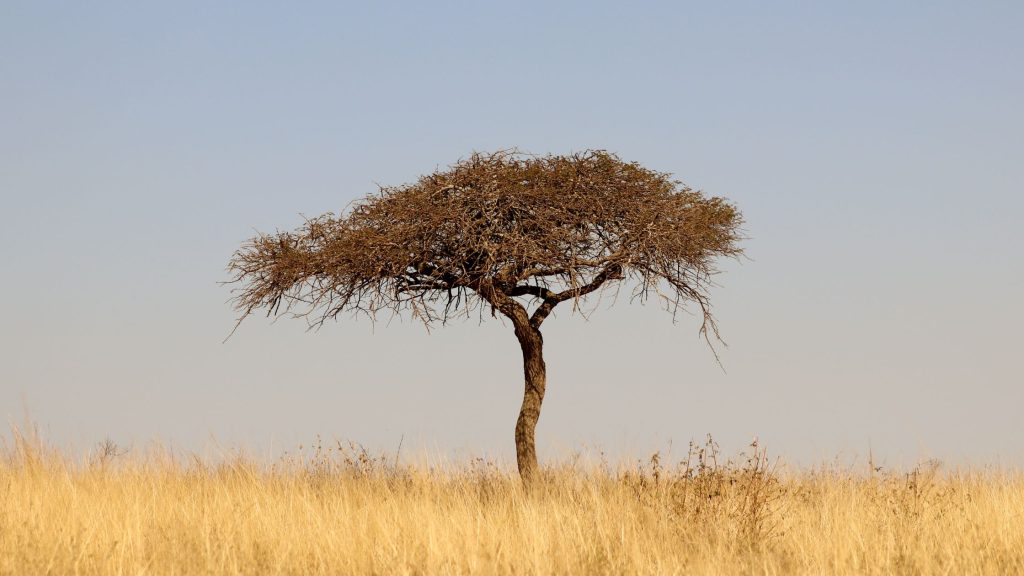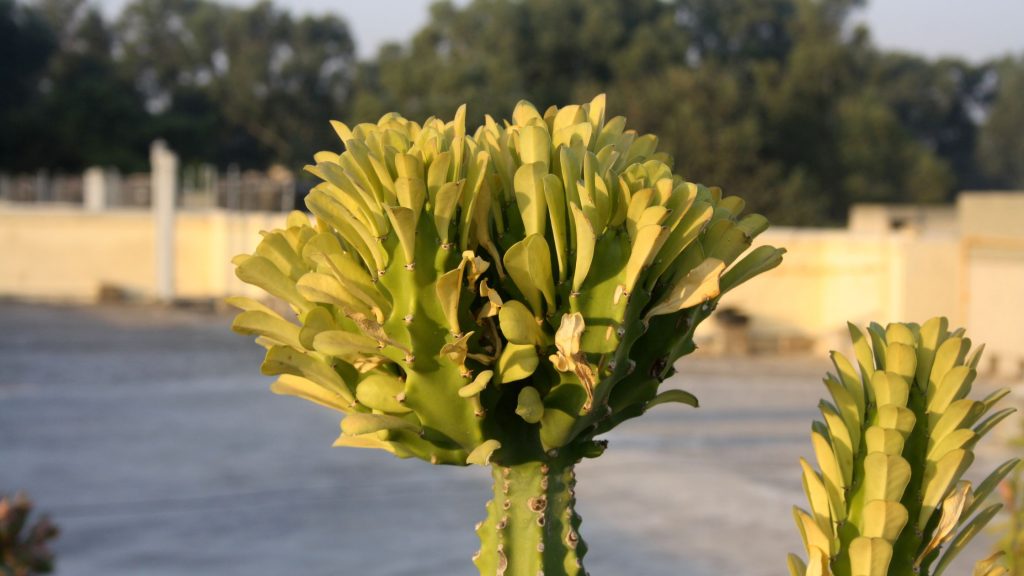The African Milk Tree is a massive tree native to Africa. The tree’s canopy spreads out wide and can reach a height of 30 feet. The tree has large, flat leaves and tiny, white flowers. The tree’s ripe fruit resembles a large, green, fleshy berry.
Today we are going to talk about what is the African Milk Tree. This tree is interesting because it produces natural fruit jam that is used to make traditional African beverages such as gin and custard.
The tree also has medicinal properties, helping treat stomach ailments and diarrhea. The wood of the African Milk Tree is also useful for making furniture, art, and carvings.
So if you are in the market for a unique tree with many uses, be sure to check out the African Milk Tree!
The African Milk Tree, also known as the Sodom Apple Tree, is a large tree that grows in Africa. The tree can grow up to 30 feet tall and has a wide, spreading canopy.
The tree leaves are large and flat, and the flowers are small and white. When ripe, the tree’s fruit is a large, fleshy, green berry.
The African Milk Tree is native to Africa and is found in many countries across the continent.
Table of Contents
Where Does The African Milk Tree Come From?
The African Milk Tree is a native of Africa, specifically the countries of Nigeria and Cameroon. It is a member of the Euphorbiaceae family, and its scientific name is Euphorbia trigona.
The African Milk Tree is a succulent plant with thick, fleshy leaves that store water. It grows to be about 3-6 feet tall and has small, white flowers.
The African Milk Tree gets its name from the latex that oozes from cuts in its trunk and branches. This latex is milky white in color and can be poisonous if ingested.
What Does an African Milk Tree Look Like?
The African Milk Tree is a tall, slender tree that can grow up to 30 feet tall. It has smooth, green bark and long, narrow leaves that are arranged in pairs along the branches.
The tree produces small, white flowers that bloom in the springtime. The African Milk Tree is native to the countries of Ethiopia, Kenya, and Somalia.
The African Milk Tree is a very unique-looking tree that is easily recognizable. It has a very slim trunk with smooth, green bark. The tree leaves are long, narrow, and arranged in pairs along the branches.
The tree produces small, white flowers that bloom in the springtime. The African Milk Tree is native to the countries of Ethiopia, Kenya, and Somalia.
How Big Does an African Milk Tree Grow?
The African Milk Tree, or Euphorbia trigona, is a small to medium-sized succulent that typically grows to be about 3 to 5 feet tall. However, it can sometimes grow up to 10 feet tall if it has enough space to do so.
This plant is native to Africa and gets its name because its sap is white and milky-looking. The African Milk Tree is a popular houseplant because it is relatively easy to care for and does not require much attention.
This plant prefers to grow in bright, indirect sunlight but can also tolerate low-light conditions. It should be watered about once a week, allowing the soil to dry out completely between waterings.
The African Milk Tree can be propagated by cuttings or offsets and does not require much fertilizer.
What Are The Benefits Of An African Milk Tree?
The African Milk Tree, or Euphorbia trigona, is a succulent plant that originates from Central America. The tree gets its name from the white sap that seeps from its branches when they are cut. This sap is said to be similar in appearance to milk.
The African Milk Tree is a popular houseplant because it is easy to care for and does not require a lot of sunlight or water to survive. The tree is also known for its healing properties.
The sap from the tree can be used to treat wounds and skin conditions.
Some people believe that the African Milk Tree has magical powers. It is said that if you drink the milk from the tree, you can see into the future. The tree is also thought to bring good luck and fortune to those who own it.
African Milk Tree Problems
While this plant is relatively low maintenance and easy to care for, it can sometimes experience problems. Some common issues that may arise when growing African milk trees include:
- Overwatering: African milk tree is a succulent plant and is sensitive to overwatering. Be sure to only water the plant when the soil is dry to the touch and avoid allowing the plant to sit in standing water.
- Pests: African milk trees can be susceptible to pests such as mealybugs and aphids. If you notice these pests on your plant, you can try wiping them off with a cotton swab dipped in rubbing alcohol or using an insecticide specifically formulated for use on succulent plants.
- Lack of sunlight: African milk tree needs plenty of sunlight to thrive. If your plant is not getting enough sunlight, it may become leggy and have fewer flowers.
- Poor drainage: This plant needs well-draining soil to prevent root rot. If you notice that your plant is consistently overwatered or that the soil is not draining properly, you may need to repot it in a pot with better drainage.
- Fungal infections: African milk tree is susceptible to fungal infections such as root rot, which can occur if the plant is overwatered or if the soil is poorly drained. If your plant looks wilted or has black, mushy roots, it may be infected with a fungal disease.
By addressing these problems and providing your African milk tree with the proper care, you can help keep it healthy and thriving.
African milk tree poison
This plant is generally considered safe and non-toxic. It contains a milky white sap that can irritate the skin and eyes and cause digestive issues if ingested. The sap of the African milk tree contains a chemical called diterpene esters, which can cause irritation and allergic reactions in some people.
If you come into contact with the sap of this plant, you may experience symptoms such as redness, swelling, itching, and blistering on the skin. So if you get African milk tree sap on skin, be sure to wash the area with soap and water as soon as possible.
In rare cases, exposure to the sap may also cause more severe reactions, such as anaphylaxis or respiratory distress.
If you or someone you know has ingested the sap of the African milk tree, it is important to seek medical attention immediately. Symptoms of sap ingestion may include stomach pain, nausea, vomiting, and diarrhea. In severe cases, ingesting the sap may cause more serious health issues, such as respiratory distress or organ damage.
It is important to be cautious when handling the African milk tree, especially if you are allergic to its sap or if you have sensitive skin. If you are handling the plant, wear gloves and avoid getting the sap on your skin or your eyes.
African Milk Tree Care
Here are some tips for caring for your African milk tree:
- Light: African milk trees prefer bright, indirect light but can tolerate low light conditions. Avoid placing it in direct sunlight, as this can cause the leaves to turn yellow and become damaged.
- Water: African milk tree is a succulent and does not like to be watered too frequently. Allow the soil to dry out completely before watering again. Water the plant when the soil is dry to the touch, and be sure to drain any excess water from the pot to prevent root rot.
- Soil: Use a well-draining cactus or succulent potting mix for your African milk tree.
- Fertilizer: African milk tree does not require a lot of fertilization. If you choose to fertilize your plant, use a balanced fertilizer diluted to half strength once a month during the growing season (spring and summer).
- Temperature: African milk tree like a warm, consistent temperature. It is best to keep the plant in a room with a temperature between 60-85°F (16-29°C).
- African milk tree pruning is non-essential.
Following these care tips can help your African milk tree thrive.

African Milk Tree Light
In terms of light, African milk tree prefers bright, indirect light. It can tolerate some direct sun, but it is best to protect it from intense, direct sunlight, especially during the hottest part of the day. Too much direct sun can cause the leaves to turn yellow and become damaged.
It can also tolerate low-light conditions if you cannot provide bright, indirect light for your African milk tree. However, it may grow slower and produce fewer new leaves in these conditions.
To ensure that your African milk tree gets the light it needs places it in a sunny location near a window or in a room with bright, indirect light. If you are unsure whether the light in a particular location is sufficient, you can use a light meter to measure the intensity of the light. This will help you determine whether the light suits your African milk tree.
Repotting African Milk Tree Parts
When it comes to repotting an African milk tree, there are a few things you should consider:
- Timing: It is best to repot African milk tree in the spring or summer when it is actively growing.
- Size of pot: Choose a pot that is slightly larger than the current one but not too large. African milk tree likes to be slightly pot-bound, so a pot that is too large can lead to overwatering and root rot.
- Soil: Use a well-draining cactus or succulent potting mix. African milk tree is sensitive to excess moisture, so a soil mix that drains well is important.
- Repotting process: Gently remove the plant from its current pot and loosen the roots. Place it in the new pot and fill it in with soil mix. Water the plant lightly after repotting.
- Aftercare: African milk tree does not like to be watered too frequently. Water the plant when the soil is dry to the touch, and be sure to allow the soil to dry out completely before watering again.
By following these steps, you can successfully repot your African milk tree and help it thrive in its new pot.

Conclusion
The African Milk Tree is a large, evergreen tree that is native to Africa. It can grow up to 30 feet tall and has a broad, spreading canopy. The African Milk Tree is a popular landscape choice and can be used as a windbreak, privacy screen, or shade tree. It is also a popular choice for bonsai.
The African Milk Tree is easy to care for and is tolerant of poor soils and drought. Always keep the African milk tree temperature between 65 and 75 degrees Fahrenheit. It is also resistant to pests and diseases. The African Milk Tree has small, greenish-white flowers that bloom in clusters. Small, black fruits follow the flowers.
The African Milk Tree is a food source for birds and mammals. Elephants, monkeys, and squirrels eat the fruits. The African Milk Tree is also a source of milk for humans.
The milk of the African Milk Tree has high levels of calcium, protein, and fat. It is used to make cheese, butter, and ice cream.
Recent Posts
Have you found yourself wondering, 'why is my bamboo growing so slow?' Despite the fact that bamboo plants are remarkably fast-growing, it can sometimes take months (or even years!) to see any signs...
Miracle-Gro is a huge help when you are trying to get decent yields out of your plants or if you want them to thrive. However, you may have noticed that a single dose of fertilizer does little to...
